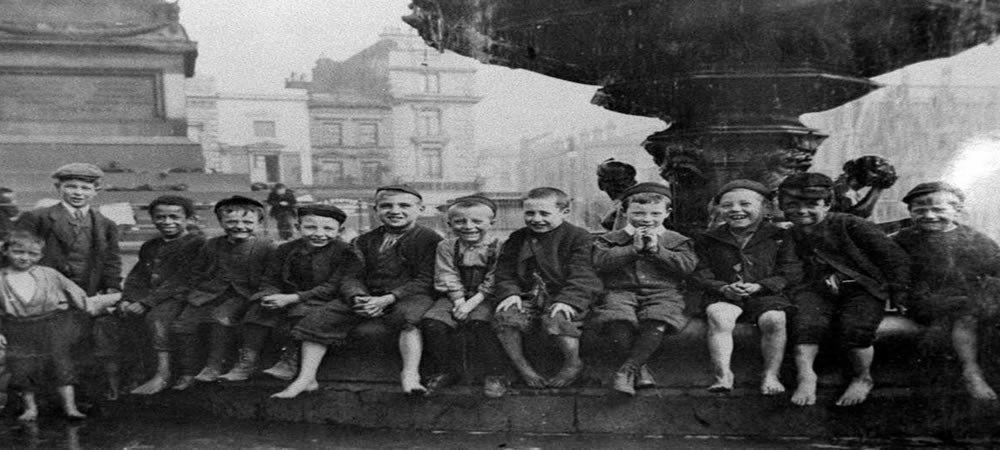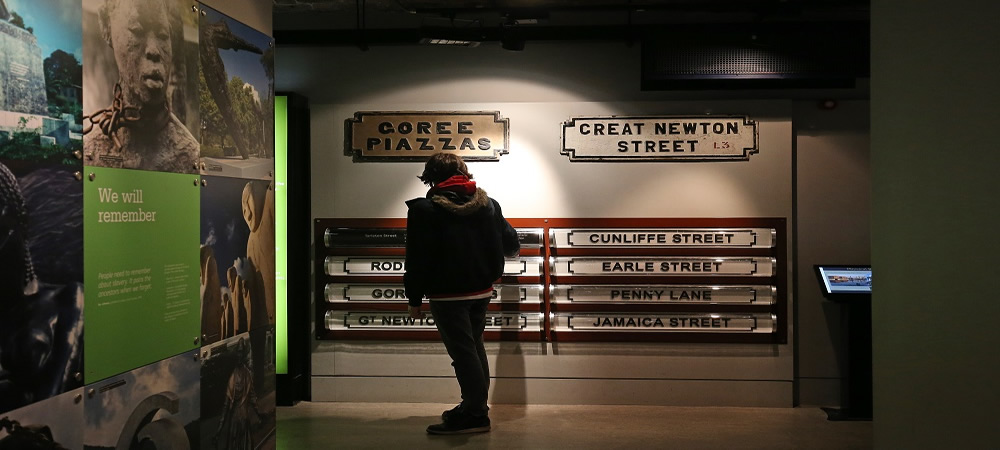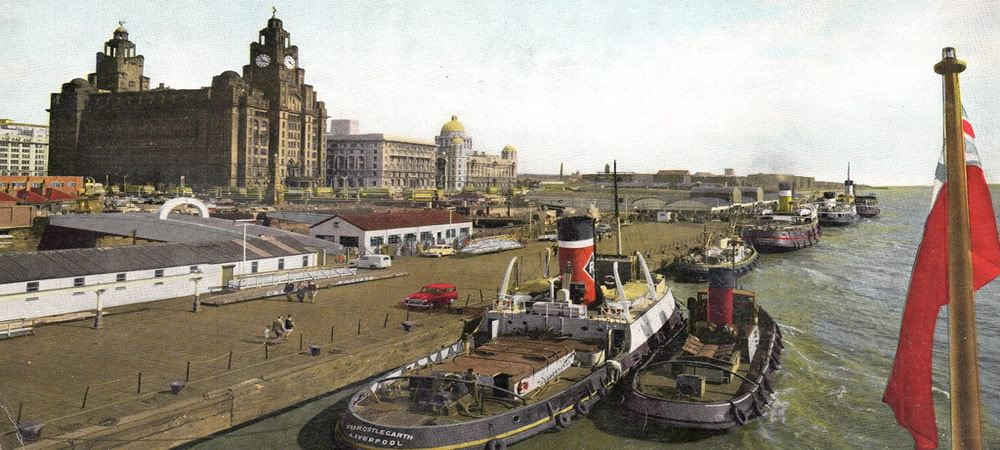"In 1911 the Liver Birds looked down on Britain's greatest port and the maritime heart of the largest empire the World had ever seen"



In the year 1908 when work began on the Liver Buildings, the City of Liverpool was at the peak of its power.
The city bristled with imposing civil monuments, gleaming office blocks and a seven mile swathe of docks.
The Liver Birds looked down on Britain’s greatest port and the maritime heart of the largest empire the world had ever seen.
This was no mere provincial Lancastrian town, not even just a British city. This was Liverpool, the most innovative, ambitious and diverse place in the world. Liverpool was the first truly global city.
This tour will take in two museums – the Museum of Liverpool and the Maritime & Slavery Museum (combined) as well as the brand new 360 Liver Buildings Tower Tour. (Please note that museums might be visited in a different order according to local conditions).
The Museum of Liverpool reflects the city's global significance through its unique geography, history and culture. Explore how the port, its people, their creative and sporting history have shaped the city.
During your tour you will discover the story of Liverpool through the amazing collections, spanning more than 10,000 years of Merseyside's history. Areas include social and community history, archaeology, the King's Regiment and transport.
The social and community history collections include objects of local, national and international importance. The wide-ranging collections reflect the changing history of the city and the diverse stories and experiences of Liverpool people.
The collections are particularly strong in the areas of popular culture and entertainment, working life, labour history, politics and public health. New material is continually added to represent contemporary issues and events affecting people in the city today.
Merseyside Maritime Museum is in the Royal Albert Dock, Liverpool. It contains a variety of objects associated with the social and commercial history of the port of Liverpool. Highlights include ship models, maritime paintings, colourful posters from the golden age of liners and even some full sized vessels.
During the visit you will have the opportunity to enter the world of the Customs officer - a dark and unseen world of smuggling, intrigue and danger, where things are not always what they seem.
A permanent exhibition explores Liverpool's central role in the Titanic story.
Titanic, then the largest ship in the world, left Southampton for New York on Wednesday 10 April 1912. On board were 922 passengers, later rising to 1316 after calls at Cherbourg and Queenstown. With her crew of 892 she carried 2,208 people in all. Although she was little more than half full, her 20 lifeboats could only carry about half of the people on board.
Titanic was registered in Liverpool, and so carried the city’s name on her stern.
Although she never visited Liverpool, Titanic had strong links with her home port. Titanic's managing company, the White Star Line, had its head office in James Street, Liverpool. White Star's main New York service sailed from Liverpool until 1907, when it was transferred to Southampton. This was partly due to the competition of the new Cunard liners Lusitania and Mauretania, both sailing from Liverpool from that year.
The International Slavery Museum increases the understanding of transatlantic, chattel and other forms of enslavement. Through our collections, public engagement and research, we explore their impact and legacies.
From about 1500 to about 1865, millions of Africans were enslaved and transported across the Atlantic by Europeans and Americans as a labour force to work, especially on plantations.
Liverpool ships carried about 1.5 million enslaved Africans across on approximately 5000 voyages, the vast majority going to the Caribbean. Around 300 voyages were made to North America - to the Carolinas, Virginia and Maryland.
The ships returned to Europe with goods such as sugar, cotton, coffee and tobacco. Liverpool grew rich on the back of trading in enslaved people.
The resistance of enslaved Africans and the abolitionist movement brought the British slave trade to an end in 1807. However, Liverpool's connections with slavery continued through cotton and other trades that were dependent on slave labour for much of the 19th century.
The International Slavery Museum explores issues linking the Americas with Liverpool using our outstanding collections of artefacts and archives.
For the first time in over 100 years, this iconic tower tour gives you the chance to explore the history of the Royal Liver Building. You’ll be taken through the building’s story and its place in Liverpool’s heritage as you experience the magnificence of the building’s views across the Liverpool skyline from two different points.
Following the introductions from your tour guide, you’ll take a lift to the tenth floor to learn about the building’s past and experience views across the River Mersey, before gradually climbing to the fifteenth floor at the very top of the building. En route, you’ll enjoy anecdotes and historical stories from your tour guide, as well as spectacular views and a world-class experience inside the historic clock tower.
This is your chance to be immersed in a world-class digitally mapped audio-visual experience inside the iconic clock tower and to learn why this building is so culturally significant to Liverpool.
With lights, sounds and digital effects, this experience brings the history of the Royal Liver Building to life right in front of you with a captivating tale of Liverpool’s past and how a city full of culture, sport, history and music has made its mark on the world and evolved into the city you see today.
This tour covers everything from the early years of Liverpool up to the Beatles and beyond.
Most of the world's emirgrants passed through Liverpool and records can be seen at the Maritime Museum.
Throughout the tour there are a number of "hands on" displays, especially in the Museum of Liverpool.
Whatever your interest in visiting Liverpool, this tour will help to put everything into perspective.
Most of this tour takes place indoors but it is necessary to walk between the museums so suitable clothing should be worn for wet weather. It can be cold on the water front so be prepared. This tour is accessable to wheelchair users. There is flat and level ground when outdoors and museums have disabled access with lifts. The Liver Building 360 tour is not suitable for guests with mobility or health conditions.

The meeting point for the morning tour is by the Museum of Liverpool at the Pier Head in Liverpool.

Tour begins covering the Social History of Liverpool and lasts for approximately two hours.

The meeting point for the afternoon tour is by the Museum of Liverpool at the Pier Head in Liverpool.

Tour begins covering the Social History of Liverpool and lasts for approximately two hours.
Feedback for individual guides is obtained from a variety of sources, including social media. We'd be delighted if you could take the time and let us know how you enjoyed your tour.
Trains on the National Rail Network arrive at Liverpool Lime Street Station. There is also a local train network called Merseyrail that travels to / from Central Station. You would then be able to obtain detailed directions using the search facility above.
There are two main bus terminals in Liverpool. There is the Central Bus Station at Canning Place, Liverpool 1. There is also another terminus at Queens Square by St George's Hall. There is an extensive bus network throughout Liverpool and the 82 bus from the Central Bus Station will travel through the city centre.
Black cabs are available all over the city and can be flagged at the roadside. You can tell the taxi driver the name of your destination and they will be able to take you there. Their knowledge of streets and venues (especially in the city centre) is extensive and you should not have any difficulty.